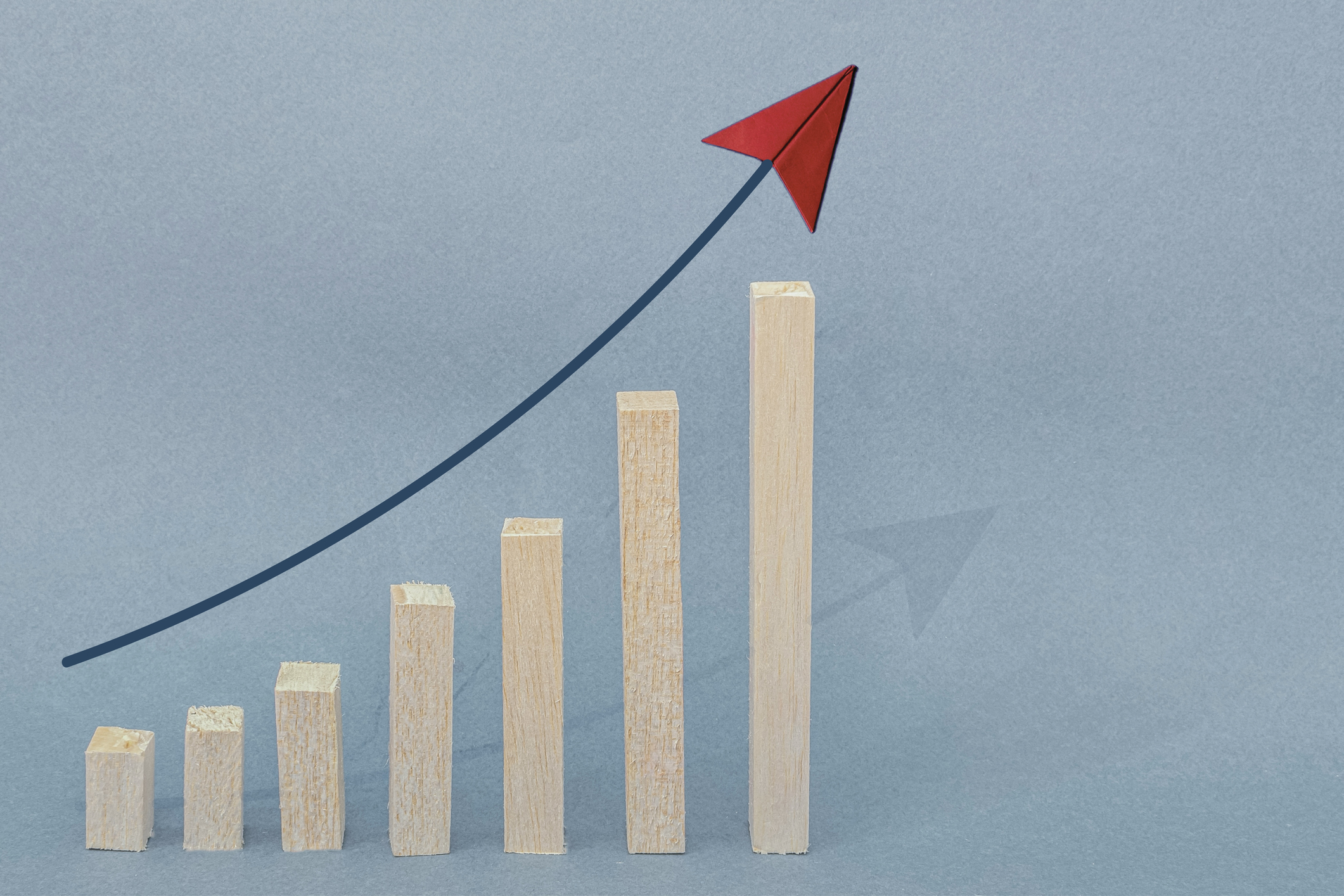Three Key Elements of a Solid Retirement Plan
A good plan isn’t just about the size of your nest egg. It’s also about how you manage these three things: taxes, investment strategy and income planning.


Here’s an alarming statistic from an Allianz Life study: Four in 10 Americans say they don’t have a financial plan for retirement and will just figure it out when they get there.
Are you one of those 40% who will wing it? Don’t be. The downside of poor or no planning is that your retirement likely will fall short financially of what it might have been. It is worth your time — especially when considering your decades of hard work — to thoroughly consider each of the financial aspects that will impact your retirement and devise a plan that will allow you to maximize your enjoyment of it.
Some people fail to plan properly for retirement because they have confidence in their retirement savings and ignore other elements of a solid retirement plan. Perhaps even more due diligence than what was required to build savings consistently over time is necessary with retirement planning because pre-retirees need to focus on how they can make their money last in retirement.
From just $107.88 $24.99 for Kiplinger Personal Finance
Be a smarter, better informed investor.

Sign up for Kiplinger’s Free Newsletters
Profit and prosper with the best of expert advice on investing, taxes, retirement, personal finance and more - straight to your e-mail.
Profit and prosper with the best of expert advice - straight to your e-mail.
Solid retirement planning is a multistep process, and while it can seem overwhelming and complicated initially, focusing on a couple of areas in particular can bring clarity and organization to your plan. People sometimes overlook these key elements of a solid retirement plan, but keeping them in mind from the beginning and as your plan evolves can lead to more confidence during your hard-earned retirement years.
1. Tax planning
Conventional wisdom going back to the 1970s has been that tax deferral is the winning strategy. I disagree. Many people are heavily tilted toward deferred money in retirement plans like 401(k)s, but that approach gives them little flexibility in retirement, because every time you draw money from those accounts, it creates taxable ordinary income. Here are some things about taxes worth knowing:
Tax rates could go up. Every time I ask an audience if they think taxes will increase in the future, about 90% say yes. For one thing, the Tax Cuts and Jobs Act expires at the end of 2025. All income tax brackets will likely increase; for example, the 12% bracket could go to 15%, the 22% to 25% and so on. Could the TCJA be extended? Perhaps so, but Washington, D.C., is an unpredictable place.
Recognize that tax increases will probably come, and if you’re all in on the deferral approach, you’ve got a headache coming. For married couples, if one dies, the surviving spouse faces a tax increase with certainty, given that they go from joint to single filing status — and at the same time, a pay cut can happen when one of the two Social Security checks is lost. I won’t even get into speculation on tax increases based on spending levels of the federal government, but if you look at history, when spending and debt are at the levels they are now, tax increases become likely.
Get a good tax analysis. One way to be better prepared for the future is to get a good tax analysis, which many people don’t. Most focus on just getting their tax returns filed annually and moving on, forgetting about taxes until the next year. But that lack of long-term strategic tax planning sets many people up for missed opportunities and can unnecessarily increase their tax exposure in retirement. It’s possible to look at a tax return, ask the right questions and identify opportunities.
Consider Roth IRAs. One opportunity for avoiding future tax headaches in retirement is to convert some tax-deferred assets into a Roth IRA. Money that you withdraw from a Roth in retirement is not taxable, and a Roth also is not subject to required minimum distribution (RMD) rules. Yes, you’ll have to pay taxes upon your conversion, but you can convert small portions annually to lessen that yearly tax burden, and do so in reasonable tax brackets.
One of the myths about the Roth is that you should convert only when the market is down. Many people don’t want to pay a tax bill for converting to a Roth when the market is high, but that’s the wrong way of thinking in terms of big-picture, long-term tax planning. The main goal should be settling some of the tax liability before retirement by converting to a Roth in advance because it can give you more flexibility in retirement.
Focus on that long-term reward of tax-free growth and tax-free withdrawals rather than on where the market stands at the time of conversion. With tax rates relatively low currently, now is a good time to consider converting some.
Deductions and surprise taxes. During tax-filing season, some people miss the opportunity to deduct their expenses, thinking they don’t have enough to go over the standard deduction threshold. A thorough tax analysis may show otherwise. Going over your entire tax return, including all the schedules and looking at all your income sources, may uncover some tax-saving opportunities for retirement you never knew existed.
Another part of a complete tax analysis is learning about taxes and additional costs in retirement that could surprise you in retirement if you weren’t aware of them previously. As an example, the Medicare premium surcharge (IRMAA) if you go into some higher tax brackets can cost you, as can taxes on capital gains and other investments.
2. Investment strategy
Sometimes married couples have multiple investment accounts, which is great, but there could be a fundamental problem with them: Oftentimes, all are invested exactly the same way or, at least, close to the same way. That’s not a long-term strategic way to think about investing for retirement.
People probably invest that way because it seems simpler. But instead, perhaps you could invest in an account based on when it’s going to be used. In other words, for the nearer-term accounts, invest more conservatively. For the longer-term accounts, which will be used later in life, invest more aggressively. And the longer you give the latter accounts to grow, the better the odds that you’ll get maximum long-term investment returns.
Another way to think about it is the taxation of the accounts. With a Roth, for example, why would I have anything but a long-term investment strategy in mind if I don’t intend to access the Roth for a long time? It would be prudent to put most of it in equities because that’s going to be my best chance for the best long-term growth. Someone could better withstand the risk in that Roth account because they don’t intend to use it for a long time and have other accounts or assets in which they have more conservative investments. The thinking is that the greatest threat of higher taxes is later, so until it becomes a near-term account, a consideration could be to invest it more aggressively. But with a traditional IRA account, for which you are or will be in the near future taking RMDs, investing some of it conservatively to fund those RMDs can make sense.
The key is having a retirement investment and income plan that can get you through market downturns while also setting yourself up for the best possible long-term tax situation.
3. Income planning
Think of being in retirement: You’ve gone from having a regular paycheck, or if you’re a business owner, you’ve generated consistent profit, but now in retirement, those income streams are gone. You’ll need something predictable to meet your needs when a market downturn comes, whether that’s three, five, seven or even more years, and without having to significantly reduce your lifestyle.
One age-old approach is that you take the number 100 and subtract your age, and that resulting number can be your equity/stock exposure. So, if you’re 70, that math would suggest that only 30% of your investments should be in stocks. Most people these days have much more than that in equity exposure, and that’s probably a result of a low-yielding environment for the past couple of decades.
The main way people can hurt themselves in stocks is by selling them when they’re down. Waiting for them to come back can take as much as a decade, and if you need money in the meantime, that would be a double-whammy hit. Therefore, have a plan to meet your lifestyle and income needs without needing to sell stocks if they’re down. That way, they can have the time needed to recover and grow for the future.
The transition to retirement can bring unwelcome surprises if you don’t develop a solid plan that considers taxes, investing and income in an integrated way while seeing how your decisions going forward may affect your bottom line. Take the time to plan with these key pieces to help better position yourself for the retirement you deserve.
Dan Dunkin contributed to this article.
The appearances in Kiplinger were obtained through a public relations program. The columnist received assistance from a public relations firm in preparing this piece for submission to Kiplinger.com. Kiplinger was not compensated in any way.
These materials are for informational purposes only. It is not intended to provide, and should not be relied on for, any tax or legal advice. Please consult a qualified professional before making decisions about your financial situation. The specific tax consequences of any investment or strategy will depend on your specific tax situation.
Related Content
- Five Tax Moves Retirees Should Consider Before Dec. 31
- Deferring Taxes Until Retirement? You May Want to Rethink That
- Nervously Nearing Retirement? Four Do’s, Four Don’ts and One Never
- To Create a Happy Retirement, Start With the Three Ps
- Five Common Retirement Mistakes and How to Avoid Them
Profit and prosper with the best of Kiplinger's advice on investing, taxes, retirement, personal finance and much more. Delivered daily. Enter your email in the box and click Sign Me Up.

Scott Noble of www.wealthwithnoregrets.com is focused on integrated retirement income, tax, investment, estate, charitable and protection planning. Scott also is a Certified Public Accountant (CPA) with Personal Financial Specialist credentials (PFS), which is a certification for providing extensive tax, estate, retirement, risk management and investment planning advice to individuals, families, executives and business owners.
-
 Tariffs, Inflation, Uncertainty, Oh My: How to Feel Less Stressed About Finances Now, Really
Tariffs, Inflation, Uncertainty, Oh My: How to Feel Less Stressed About Finances Now, ReallyTariffs, high prices and an uncertain economy getting you down? These steps can help.
-
 IRS Updates Capital Gains Tax Thresholds for 2026: Here’s What’s New
IRS Updates Capital Gains Tax Thresholds for 2026: Here’s What’s NewCapital Gains The IRS has increased the capital gains tax income thresholds for 2026. You'll need this information to help minimize your tax burden.
-
 Your Estate Plan Isn't 'Done' Until You've Completed These Five Steps, From an Estate Planning Attorney
Your Estate Plan Isn't 'Done' Until You've Completed These Five Steps, From an Estate Planning AttorneyCongratulations on getting your estate plan in order. Now, you need to communicate the relevant details to ensure your plan is effectively carried out.
-
 A Nightmare for Parents: How to Navigate the Legal Boundaries of Tenant Rights During a Family Crisis
A Nightmare for Parents: How to Navigate the Legal Boundaries of Tenant Rights During a Family CrisisThis family's story illustrates how important it is to get help sooner rather than later and highlights the complexities of tenant rights and legal protections.
-
 Eight Steps to Help Get You Through the Open Enrollment Jungle at Work
Eight Steps to Help Get You Through the Open Enrollment Jungle at WorkWondering how to survive open enrollment this year? Arm yourself with these tools to cut through the process and get the best workplace benefits for you.
-
 Seven Moves for High-Net-Worth People to Make Before End of 2025, From a Financial Planner
Seven Moves for High-Net-Worth People to Make Before End of 2025, From a Financial PlannerIt's time to focus on how they can potentially reduce their taxes, align their finances with family goals and build their financial confidence for the new year.
-
 I'm a Financial Planner: These Are the Seven Tiers of Retirement Well-Being
I'm a Financial Planner: These Are the Seven Tiers of Retirement Well-BeingLet's apply Maslow's hierarchy of needs to financial planning to create a guide for ranking financial priorities.
-
 Why More Americans Are Redefining Retirement, Just Like I Did
Why More Americans Are Redefining Retirement, Just Like I DidRetirement readiness requires more than just money. You have a lot of decisions to make about what kind of life you want to live and how to make it happen.
-
 A Compelling Case for Why Property Investing Reigns Supreme, From a Real Estate Investing Pro
A Compelling Case for Why Property Investing Reigns Supreme, From a Real Estate Investing ProInvestment data show real estate's superior risk-adjusted returns and unprecedented tax advantages through strategies like 1031 exchanges and opportunity zones.
-
 Are You Retired? Here's How to Drop the Guilt and Spend Your Nest Egg
Are You Retired? Here's How to Drop the Guilt and Spend Your Nest EggTransitioning from a lifetime of diligent saving to enjoying your wealth in retirement tends to be riddled with guilt, but it doesn't have to be that way.